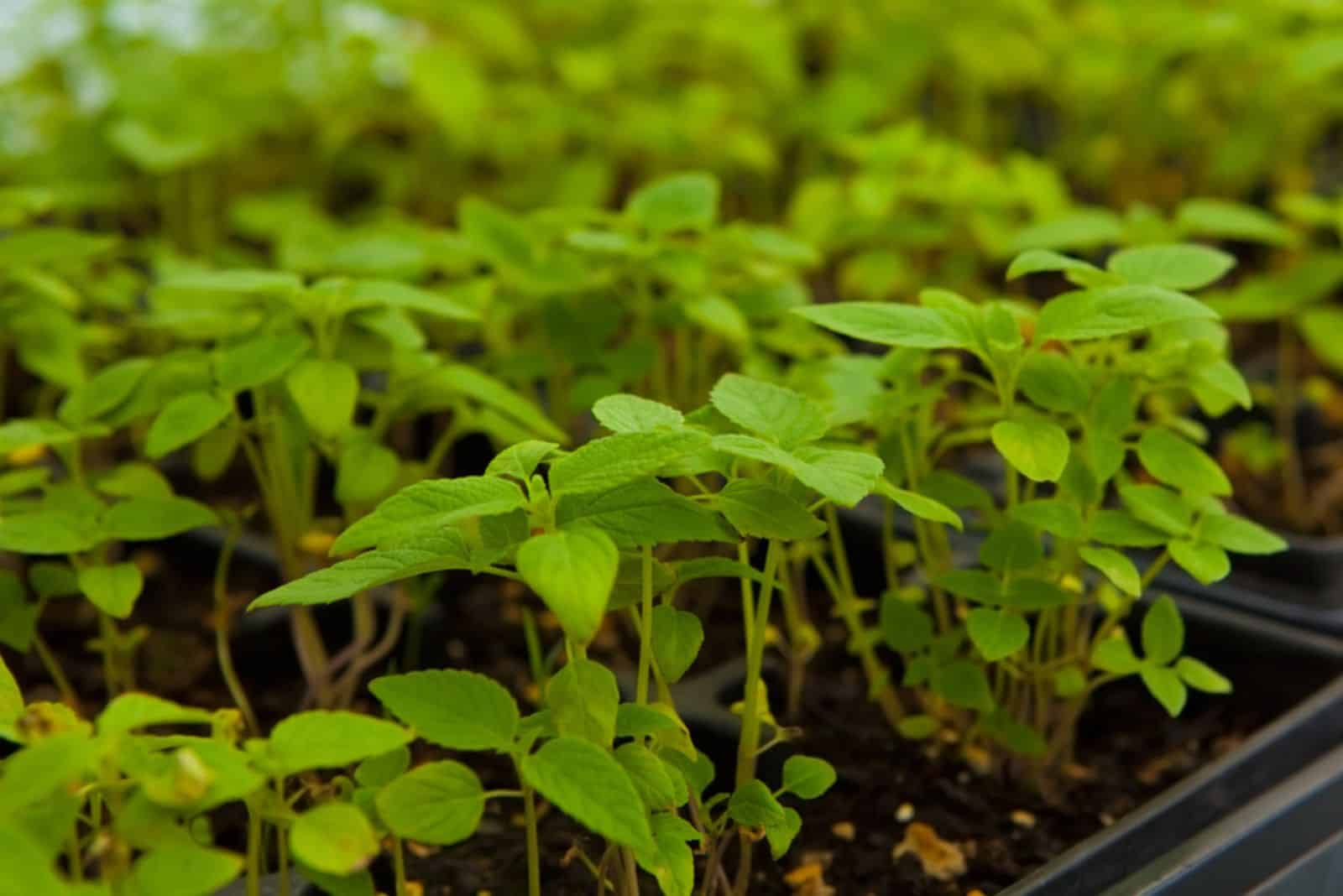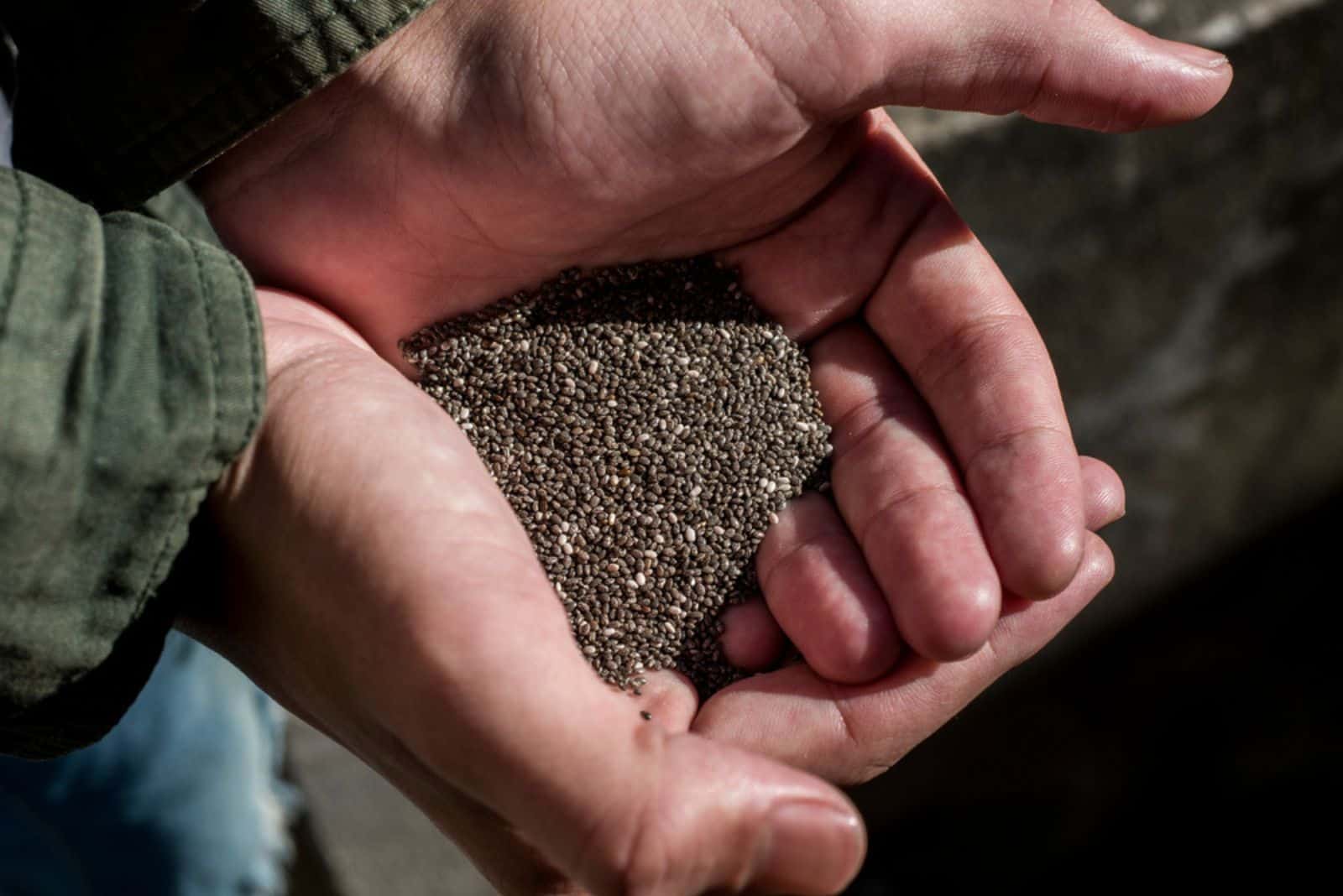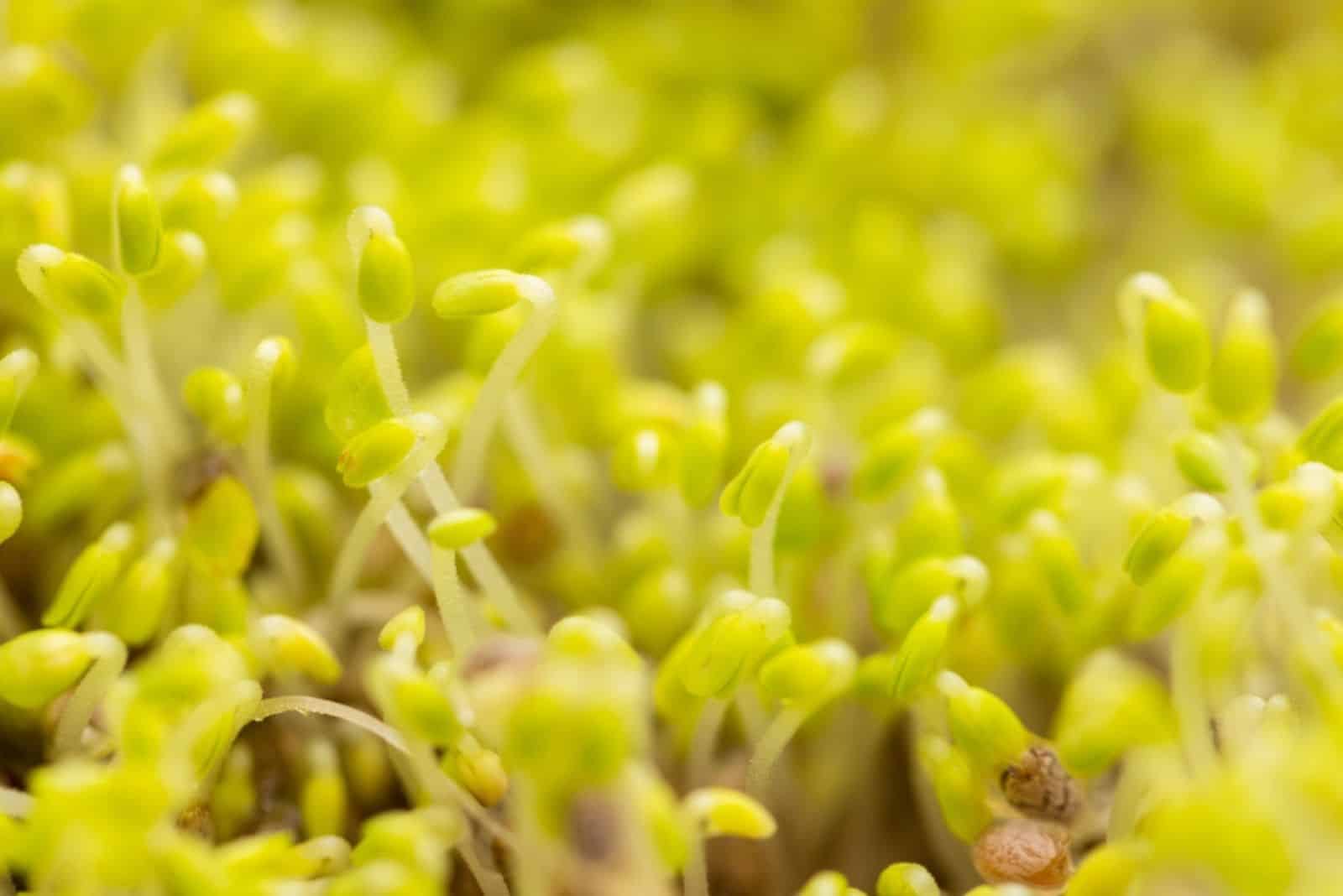Many people describe chia seeds using only one word: superfood. Well, they do have a wide range of nutritional and health benefits, but did you know that each part of the chia plant has its own individual benefits and usages?
And that’s exactly what I’ll show you in this article. Along with ways of using the entire plant, I’ll also show you some tried-and-true tips on how to grow chia seeds.
Ready to become a chia-growing expert? Here’s all you need to know!
More About The Chia Plant
In botany, this plant is referred to as Salvia hispanica and it belongs to the Lamiaceae family (mint family).
The chia plant features serrate leaves and generates bell-shaped violet-blue blossoms in late spring. But the plant isn’t grown because of its ornamental features but rather the seeds.
Each blossom will produce seed heads that contain small white to black seeds.
This Salvia plant grows best in USDA hardiness zones 9 through 12. It’s a short-day plant, meaning that it generates blossoms and seeds in areas with longer nights.
If you live in the northern parts of the country, you’ll need to create such conditions by covering the plant for approximately 12 hours in late summer. This will encourage your chia to produce blossoms before the first expected frost.
When purchasing the seeds, make sure they’re organic and from trustworthy sellers.
Tips For Growing Chia
Growers love chia because it doesn’t need much to thrive and isn’t sensitive to heat or drought. Additionally, it shows great resilience to pests and infections.
These are also self-pollinating and self-seeding plants and you can use them to suppress weed growth.
Here are 6 basic chia plant requirements.
1. Light: One of the most important things to do before planting your chia is find a spot that receives approximately 6 hours of sunlight per day.
2. Soil: This plant won’t grow well in heavy soils, so choose a free-draining, loose, sandy soil type. Before planting your chia, you should till about 8 inches of the soil.
3. Feeding: One of the best things about the chia plant is that it doesn’t require additional feeding once established. Simply add compost or other organic materials, such as alfalfa.
4. Watering: These plants can withstand drought and will need irrigation only during hot summer days. However, you’ll need to add more water during the first growth year, i.e., until your chia is fully established.
Be careful not to overwater the soil because it’s one of the main causes of problems in salvia plants.
5. Sowing the seeds: After you determine the planting site, broadcast the seeds and tap them into the ground gently. Make sure to thin the seedlings as they develop.
It’s not uncommon for birds to visit a garden and eat the seeds, so consider germinating the seeds indoors under a humidity dome. Once the chia seedlings are about 3 inches tall, plant them in the ground.
6. Spacing: The space you need to ensure for your chia plants depends on the way you’re growing them. For instance, if you grow them as annual plants, the spacing should be approximately 12 inches.
On the other hand, if you grow this Salvia as a perennial, ensure spacing of about 18-24 inches. This will give the chia roots enough space to spread.
5 Best Chia Plant Uses
Now that you know the perfect growing conditions for your chia, it’s time to find out how to use this plant.
1. Chia Seeds
Chia seeds are definitely the most popular part of this plant and have many health benefits. (1)
First, the seeds are high in protein and fiber, making them a great option for people who struggle with weight loss.
They’re also nutritious because they contain omega-3 fatty acids, proteins, and other micronutrients.
The seeds of this amazing plant also lower the risk of heart disease and have beneficial bone nutrients.
You can consume the seeds raw or pre-soak them and add them to many delicious meals.
Don’t harvest chia seed heads until the blossoms drop off their petals. Put the seed heads on a paper towel and find a warm and well-ventilated location.
When the seed heads are completely dry, separate them from the seed heads and sieve to remove debris.
Put the Salvia hispanica seeds in an airtight jar and place them in a cool and dark spot.
2. Chia Oil
The oil extracted from chia is frequently used in hair and skin products. It contains omega 3-fatty acids, vitamin E, and other beneficial compounds for moisturizing and healing the skin.
You can use it for damaged hair because it strengthens hair follicles.
If you want to try making your own chia oil, put the seeds in a hand grinder and grind until you get a paste. Put the paste in a cheesecloth, squeeze well to extract the oil, and store it in a clean container.
3. Sprouts
You can start harvesting your chia once it develops sprouts, which typically takes 2 weeks. The sprouts can be used in salads or appetizers.
If you decide on this method, spritz some water in a bowl and sprinkle the seeds. Put the bowl in a larger container filled with water to create a more humid environment for the seeds.
Mist the seeds lightly, put a plastic bag over the container, and place it in a dark spot. You’ll need to wait about a week for the chia seeds to sprout and then expose them to more sunlight to promote growth.
4. Leaves
The next chia plant part you can use is the foliage. It’s edible and highly nutritious since it contains flavonoids. (2)
It tastes amazing in green smoothies and makes an excellent addition to salads.
Many people make tea from the chia leaves and use it for therapeutic purposes.
5. Mulch
A few years ago, I decided to use chia stalks and stems as mulch instead of adding them to my compost pile.
The chopped stems and stalks decomposed and released nutrients into the soil and acted as any other mulch type.
As an added bonus, the oil from stems and leaves acts as a pest repellent, making the chia plant an excellent choice for gardens. (3)
So, is the chia plant on your to-grow list this year? Well, now you know all it needs for healthy development so there’s no reason why you shouldn’t add it to your garden. Happy growing!
References
1. BSc, K. G. (2022, April 12). 7 Enticing Health Benefits of Chia Seeds. Healthline. https://www.healthline.com/nutrition/11-proven-health-benefits-of-chia-seeds#TOC_TITLE_HDR_3
2. Amato, Mariana & Caruso, Marisa & Guzzo, Flavia & Galgano, Fernanda & Commisso, Mauro & Bochicchio, Rocco & Labella, Rosanna & Favati, Fabio. (2015). Nutritional quality of seeds and leaf metabolites of Chia (Salvia hispanica L.) from Southern Italy. European Food Research and Technology.
3. Bochicchio, R. et al. (2015). Innovative Crop Productions for Healthy Food: The Case of Chia (Salvia hispanica L.). In: Vastola, A. (eds) The Sustainability of Agro-Food and Natural Resource Systems in the Mediterranean Basin. Springer, Cham.




